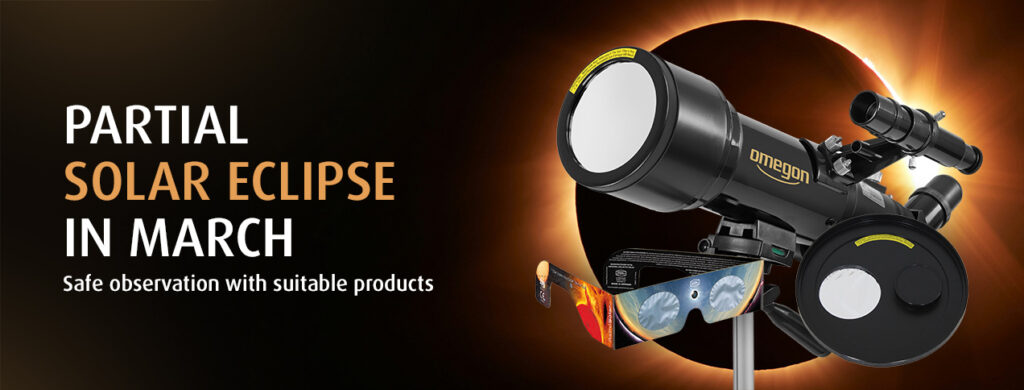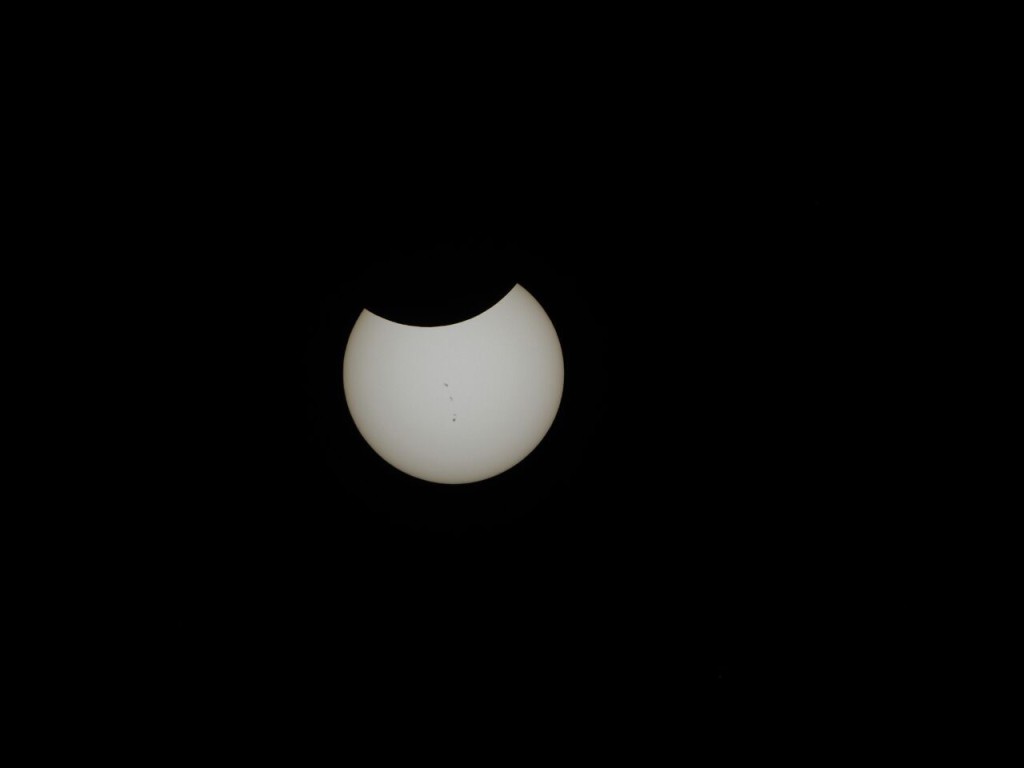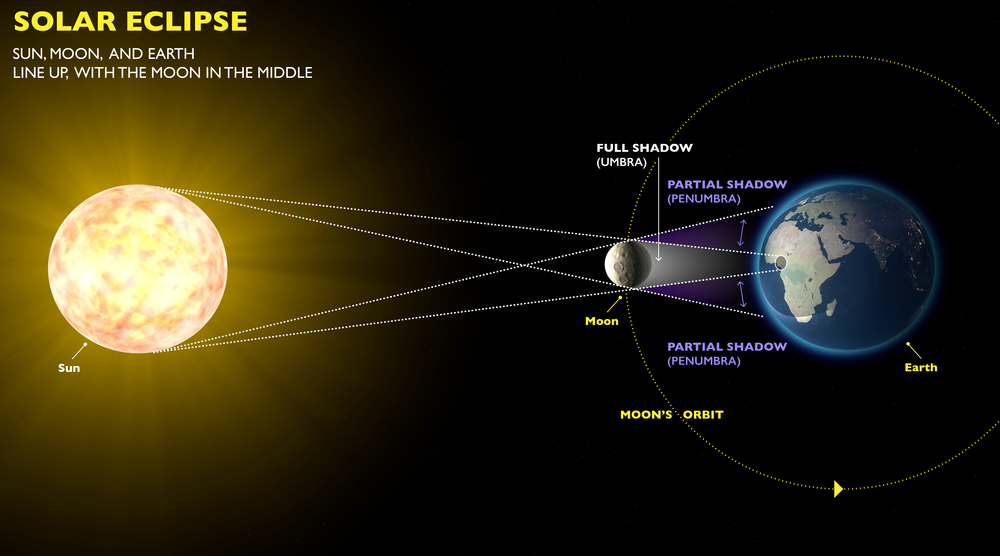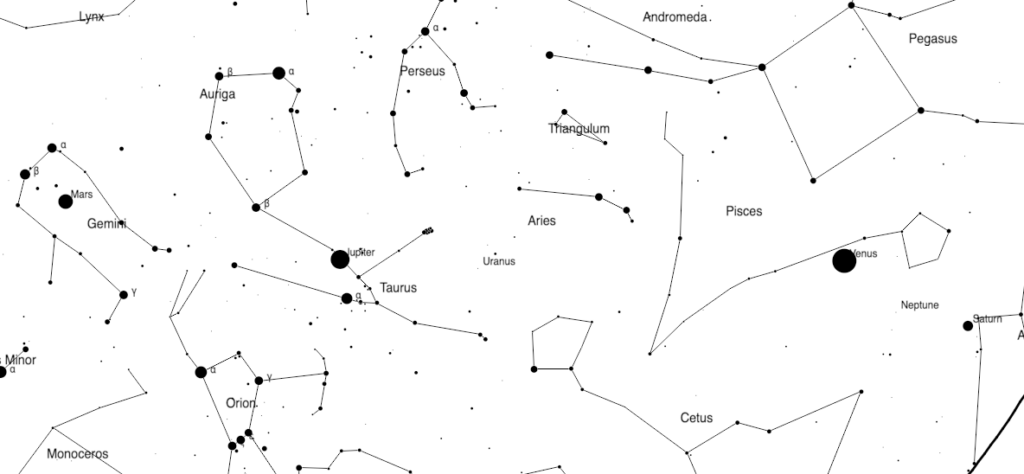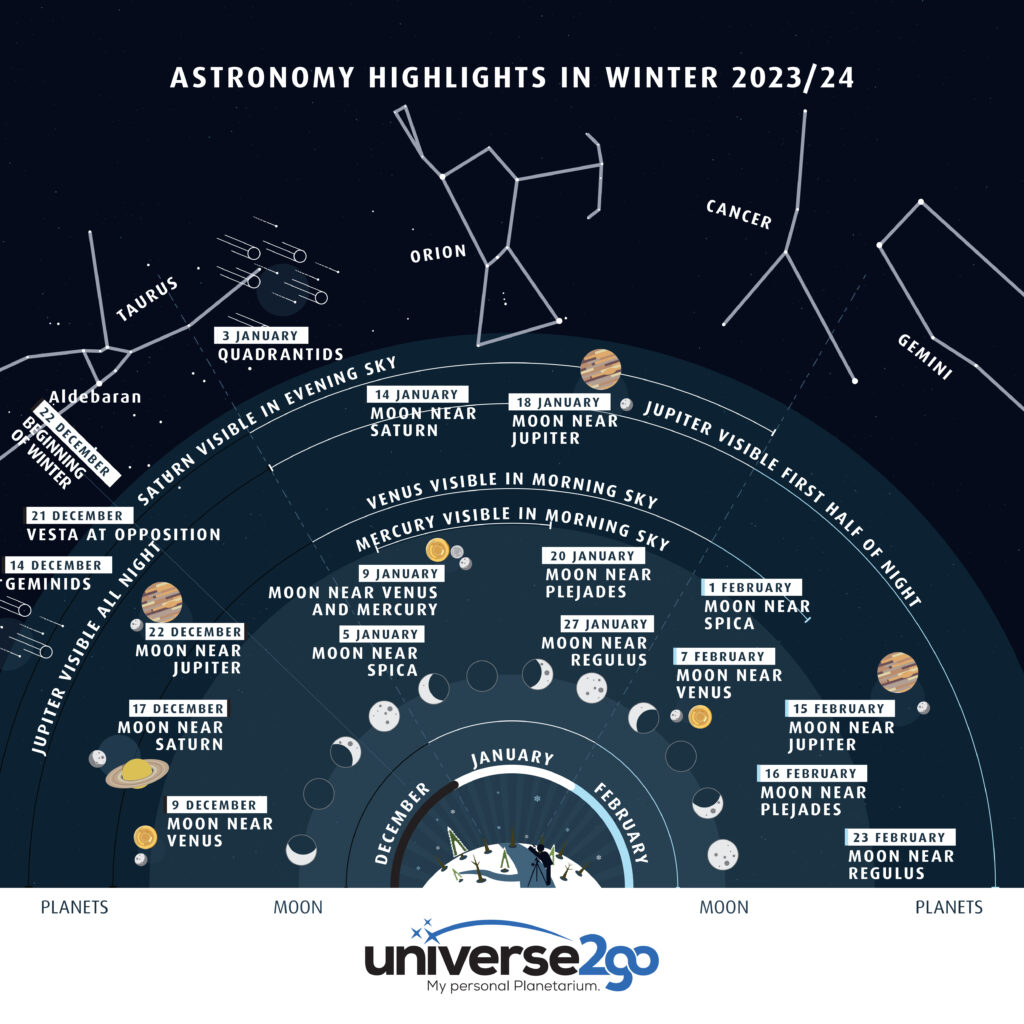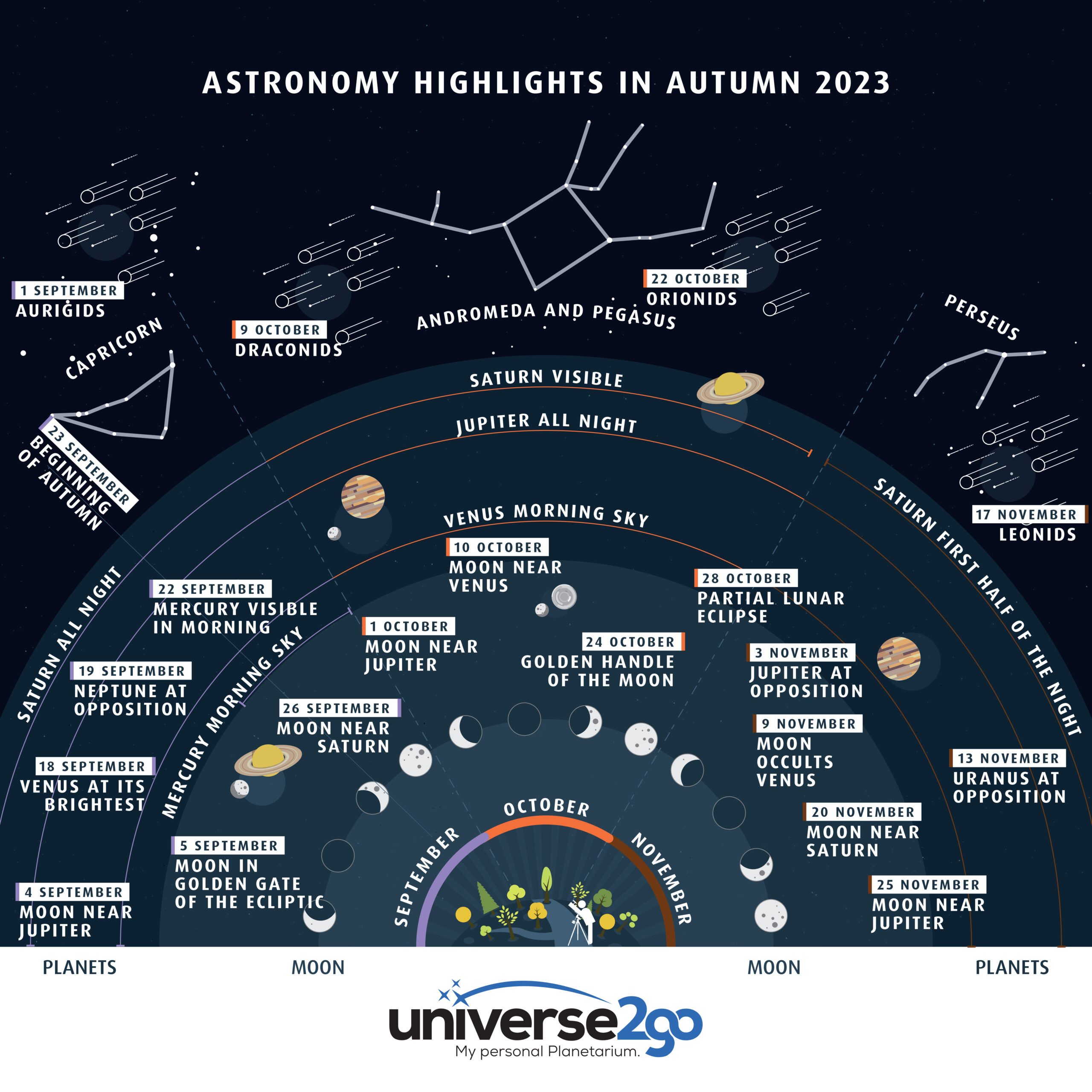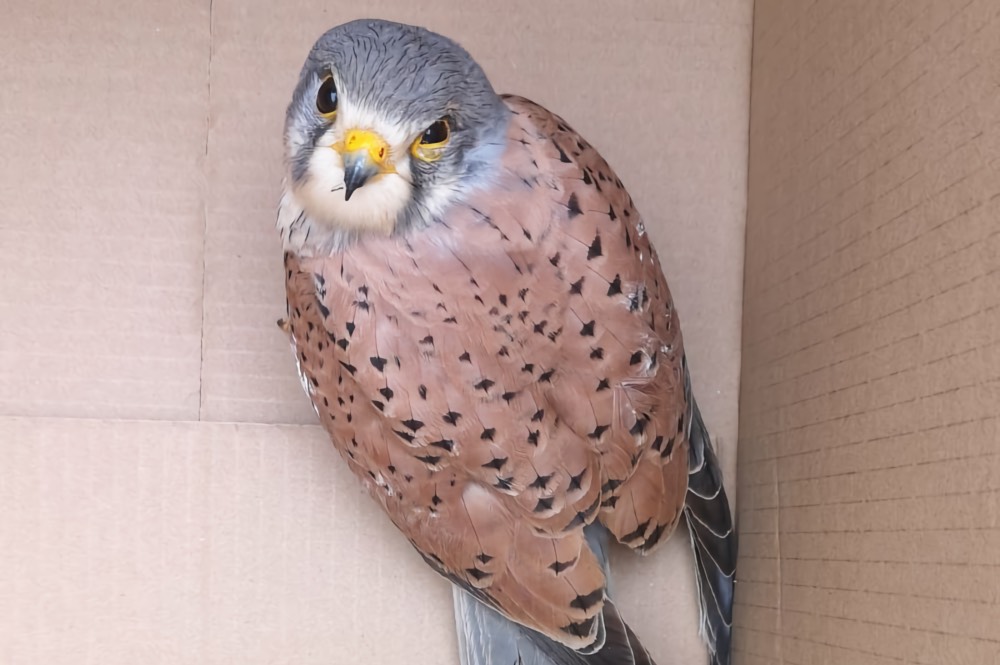Spring has arrived – bringing not just blossoming trees, but also a sky full of highlights! With a clear view up and a bit of planning, you can experience some stunning sights this Spring – even during the day. How about a partial Solar eclipse? Find out what else is going to be in store for you in our Astro Highlights for March, April, and May.
Do you have your own website and want to excite your visitors about the latest celestial events? Feel free to use our graphic – just include a link to www.astroshop.eu.
March 2025
March 1: Moon meets Venus and Mercury
In the early dusk you may witness a magical scene: The delicate crescent Moon – just illuminated by 4% – meets dazzling Venus and the elusive Mercury. Venus will shine brightly at -4.7 mag and is hard to be missed. Mercury, on the other hand, is low in the horizon, requiring an unobstructed westerly view. This conjunction is a fantastic kick-off event for the astronomical Spring.
March 9: Moon meets Mars
Tonight you can observe the red planet Mars close to the Moon. Mars with its characteristic reddish hue is currently crossing the Gemini constellation. Even with simple binoculars this encounter offers a beautiful sight. In addition, Mercury which reached its greatest eastern elongation yesterday, is particularly visible in the evening sky.
March 9: Golden Handle
Poetic, isn’t it? The Golden Handle is a striking lunar phenomenon visible in the late night of March 9th. It occurs when the rising Sun illuminates the edge of the Sinus Iridum crater, leaving surrounding areas in a shadow. This fascinating play of light and shadow on the Moon’s surface is a must-see.
March 14: Partial Lunar Eclipse
In the early morning hours there will be a partial lunar eclipse that is going to be visible only in its penumbral phase from Central Europe. The umbral phase begins at 6:09 AM CET, but by then the Moon will have already set. While this will limit its visibility, early risers may still find it worthwhile to behold.
March 20: Beginning of Spring
Astronomical Spring begins today. Day and night are nearly equal in length.
March 20: Moon occults π Sco
During these early morning hours the Moon approaches the star π Sco, briefly eclipsing it from a view. Nearby the reddish Antares – Scorpio’s brightest star – shines brilliantly. This stellar occultation is going to be a thrilling event worth watching.
March 29: Partial Solar Eclipse
A partial solar eclipse is visible over Central Europe today, though with a relatively low coverage. The farther North you are, the greater the coverage. In London 24% of the Sun will be eclipsed; in Hamburg 20%; and in Munich about 10%. Eclipse times are as follows: Start at 11:20 AM CET, maximum at 12:10 PM CET, and end at 1:00 PM CET. Remember, only observe with suitable filters or special eclipse glasses!
April 2025
April 1: Moon meets Pleiades
In the evening the Moon will pair with the Pleiades, an open star cluster also known as the Seven Sisters. Only about one degree will then separate these celestial objects. The Pleiades are a cluster of young, hot stars visible to the naked eye. Their full beauty unfolds with binoculars or a telescope.
April 2: Moon meets Jupiter
Tonight the waxing Moon will approach Jupiter – the largest planet in our Solar system. You can already spot Jupiter’s four largest moons Io, Europa, Ganymede and Callisto as tiny points of light – even with binoculars.
April 5: Moon meets Mars
Mars and the Moon will both be high in the sky within the Gemini constellation during twighlight, easily to be spotted above Orion. Mars will shine at -1.5 mag, recognizable by its reddish glow.
April 22: Lyrid Meteor Shower
If you’ve never seen a meteor shower, then April 22nd is your chance to do so. The Lyrids are going to reach their peak today with up to 20 meteors per hour that may be visible. Originating from the comet Thatcher, these meteors are melting by the friction while falling through our Earth’s atmosphere, creating shooting stars. Overall conditions are going to be ideal this year, as the Moon won’t interfere.
April 25: Venus at maximum brightness
Venus will reach its peak brightness of -4.7 mag, resembling a spotlight in the sky. It’s going to be visible only during dawn, rising at 4:35 AM CET and staying above the horizon for about 1.5 hours before the Sun is going to take over. A slim crescent Moon joins Venus and dim Saturn at low latitudes on the horizon.
May 2025
May 1: Vesta at Opposition
The asteroid Vesta is at opposition to the Sun, making it particularly visible. Shining at a magnitude of 5.4, it’s bright enough to be seen with the naked eye under a dark sky. However, it appears star-like, so a finder chart or a GoTo telescope is recommended.
May 3: Moon meets M44 and Mars
The Moon crosses the ecliptic, occasionally approaching celestial objects like the open star cluster M44. Tonight you can admire M44 and Mars together through binoculars.
May 9: Venus meets Saturn
Venus and Saturn converge about 7° apart in the Eastern horizon today. In addition to this sight, the remote planet Neptune will be located between them. A rare chance to observe three planets in one field of view.
May 24: Moon meets Venus
A breathtaking display unfolds during dawn: The delicate crescent Moon, by 13% illuminated, will approach brilliant Venus.
May 28: Moon meets Jupiter
Clear skies reveal a slender crescent Moon meeting the gas giant Jupiter near the horizon.
We wish you many clear nights and delightful moments under the stars. Happy stargazing!


